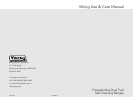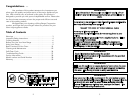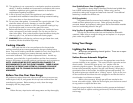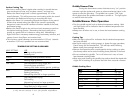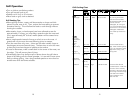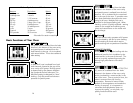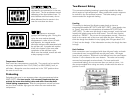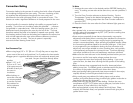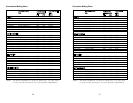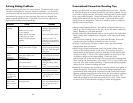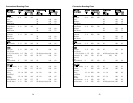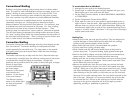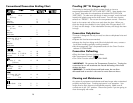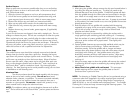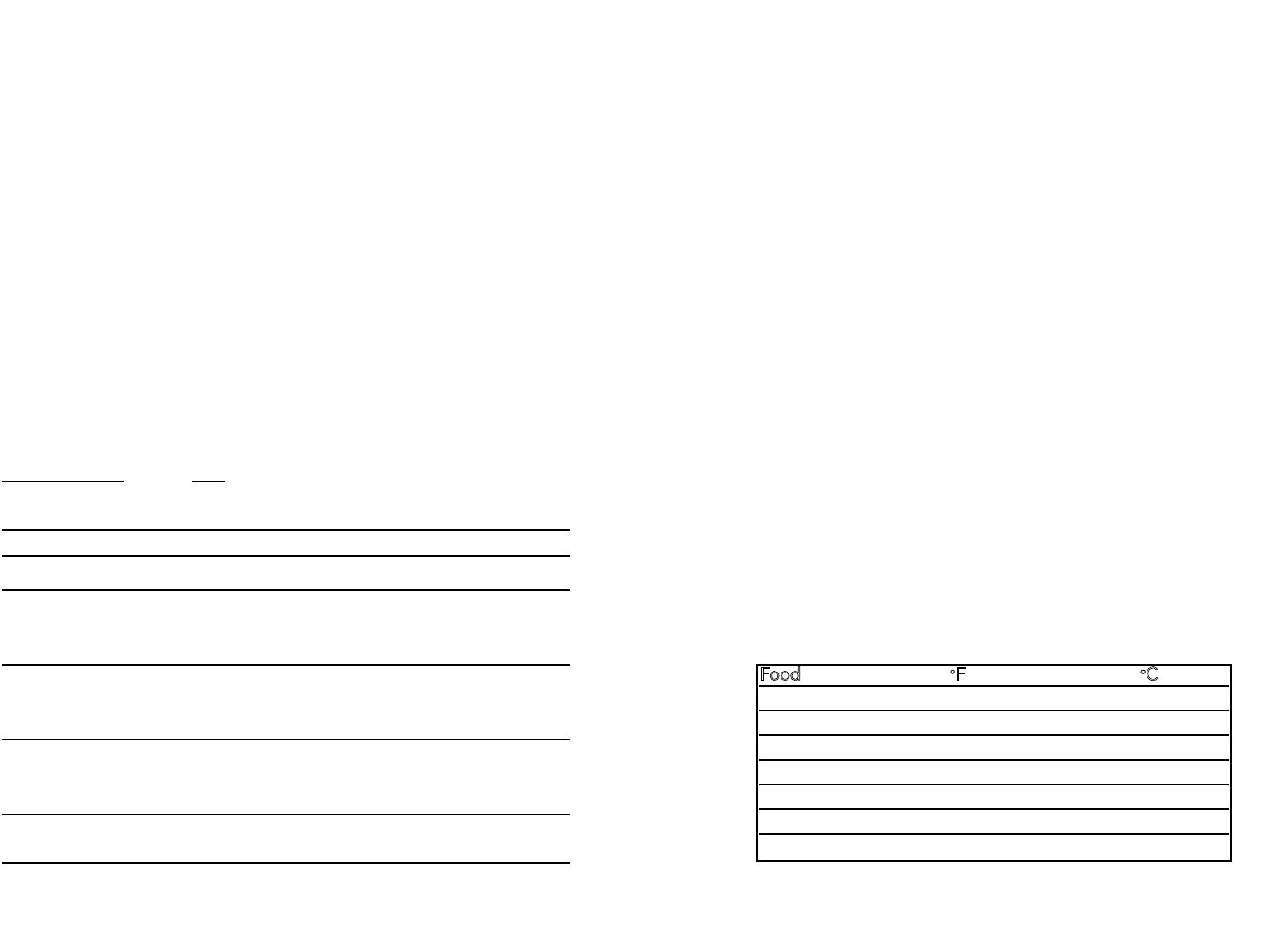
Griddle Cooking Chart
Food
o
F
o
C
Eggs 250-300 121-149
Bacon 325-350 163-177
Pancakes 375-400 191-205
French Toast 400 205
Fish Fillets 300 149
Hamburger 350 177
Steaks 350 177
9
Griddle/Simmer Plate
Turning the thermostat counter clockwise to any “on” position
activates a glo-bar igniter and opens an electromechanical valve in the
system to start the gas valve. The griddle has a power “ON” light
which glows when the griddle thermostat is turned on. The light cycles
on and off with the burner.
Griddle/Simmer Plate Operation
•Turn the griddle control knob to desired temperature setting. Wait
until light cycles off for indication that the desired temperature has
been reached.
•Always turn off when not in use, or lower the heat between cooking
loads.
Cooking Tips
•Wait until light cycles off for indication that the desired temperature
has been reached.
•Use liquid cooking oil, cooking sprays, or butter for eggs, pancakes,
French toast, fish and sandwiches. This will help reduce sticking.
Meats usually have enough natural oils.
•Remove food particles with a metal spatula during cooking to make
the cleanup easier and to avoid including those particles in the food.
•Do not overheat the griddle. Turn it off when not in use, or lower
heat between cooking loads.
•After using and cleaning the griddle, the surface should be wiped with
a light film of cooking oil to protect the finish from rust and corrosion.
Surface Cooking Tips
•Use low or medium flame heights when cooking in utensils that are
poor conductors of heat, such as glass, ceramic, and cast-iron.
Reduce the flame height until it covers approximately 1/3 of the
utensil diameter. This will ensure more even heating within the utensil
and reduce the likelihood of burning or scorching the food.
•Reduce the flame if it is extending beyond the bottom of the utensil.
A flame that extends along the sides of the utensil is potentially
dangerous, heats the utensil handle and kitchen instead of the food,
and wastes energy.
•Reduce the flame height to the minimum level necessary to perform
the desired cooking process. Remember that food cooks just as
quickly at a gentle boil as it does at a rolling boil. Maintaining a
higher boil than is necessary wastes energy, cooks away moisture, and
causes a loss in food flavor and nutrient level.
•The minimum utensil diameter recommended is 6”(15 cm). Utensils
as small as 4”(10 cm) is possible but not recommended.
TEMPERATURE SETTING GUIDELINES*
HEA
T SETTING USE
Simmer Melting small quantities.
Steaming rice.
Simmer Simmering small quantities, sauces.
Low Melting large quantities
Low - Med Low-temperature frying. (eggs, etc.)
Simmering large quantities
Heating milk, cream sauces, gravies, puddings.
Med Sauteing and browning
Braising, pan-frying
Maintaining slow boil on large quantities.
Med-HI High-temperature frying.
Pan broiling
Maintaining fast boil on large quantities
HI Boiling water quickly.
Deep-fat frying in large utensil
*NOTE: The above information is given as guide only. Y ou may need
to vary the heat settings to suit your personal requirement s.
8



